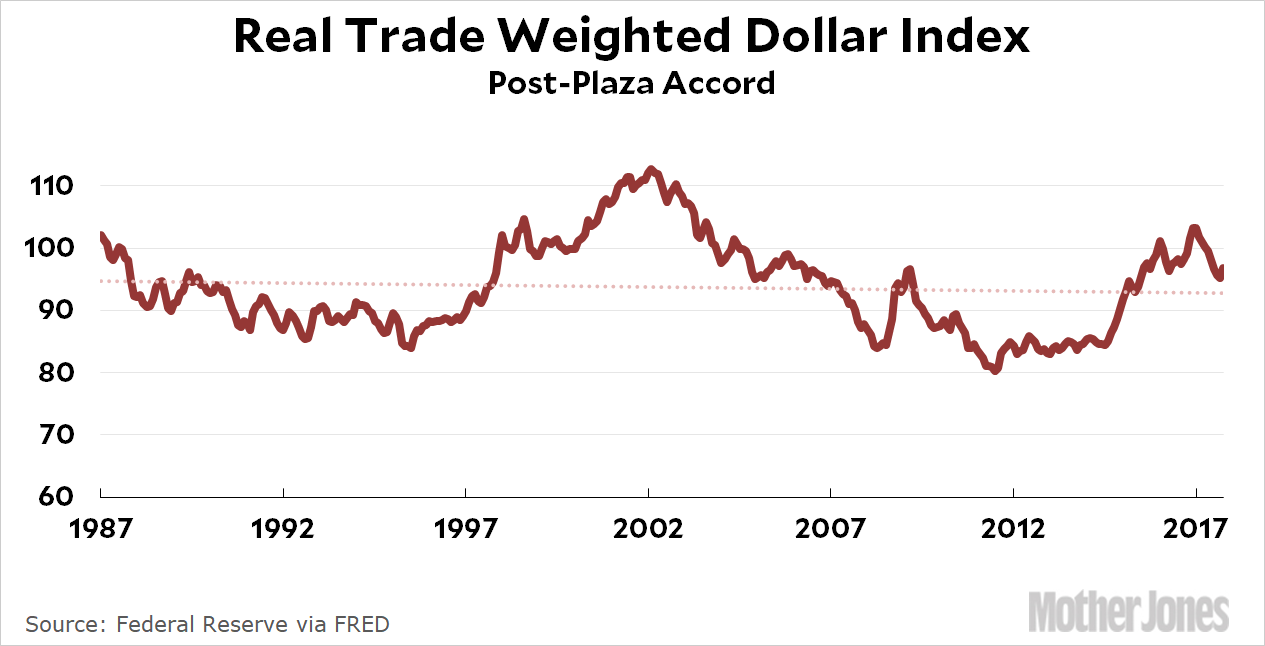Yesterday at Davos, Treasury Secretary Steven Mnuchin casually suggested that the United States preferred a weak dollar because it makes our exports cheaper. A few hours later, Commerce Secretary Wilbur Ross said no, our strong dollar policy is the same as always. In other words, it was just another day at the office for the Trump administration, which was flying blind because the president hadn’t tweeted anything lately about his views on the role of currency flows in international trade equilibria. Larry Summers is unhappy about this:
Beyond style, there are good economic reasons the last seven Treasury secretaries stayed with the strong dollar mantra. First, the level of the dollar determines America’s terms of trade. Yes, a weaker dollar means cheaper U.S. exports. But it also means higher priced imports and so less purchasing power for American incomes….Second, a weakening dollar likely means higher U.S. interest rates….Third, when policymakers appear like they might be endorsing a falling dollar after a period of sharp dollar decline like we have seen, there is some risk of avalanche effects.
I suppose Summers is right, but I can’t get too excited about this. Naturally I have a chart to explain why:

In the early 80s the dollar got really, really strong, so in late 1985 a bunch of big countries signed the Plaza Accord to bring the value of the dollar back down to earth. Since then, the dollar has bobbed up and down and…pretty much always reverted to the mean within a few years. Right now it’s precisely where it was 30 years ago.
Unlike Summers, I have never been especially convinced that pronouncements on the dollar have any effect at all. This is because the Treasury Secretary has next to no influence on the value of the dollar. It depends on fundamentals like inflation, interest rates, trade balances, market interventions, and so forth. Summers kinda sorta implies that the 1987 Black Monday stock market crash was due to James Baker’s threat to devalue the dollar, but I don’t know anyone who really believes that.
Steve Mnuchin might think the dollar should be worth ten kwatloos, but nobody should care unless he announces some policy to back that up—and I’m not even sure what that could be. In the meantime, if bond traders want to get bent out of shape over every word that comes out of the Treasury Department, that’s their problem.














